Welcome everyone. I have a very special guest today. Today my special guest is going to help us with more tools to boost our immune system and just feel better and live healthier, happier lives. So, I would love to take a moment to read her bio and introduce her to you. Her name is, Dr. Jessica Drummond and she’s the CEO of the Integrative Women’s Health Institute and author of Outsmart Endometriosis. She holds licenses in Physical Therapy and Clinical Nutrition, and is a Board Certified Health Coach. She has 20 years of experience working with women with chronic pelvic pain. She facilitates educational programs for women’s health professionals in more than 60 countries globally, and leads virtual wellness programs for people with endometriosis. Dr. Drummond lives and works with her husband and daughters between Houston, Texas and Fairfield, Connecticut, so welcome Jessica.
Thanks so much Robin, I’m so glad to be here.
This is a really big topic and before we get started on pelvic pain and pelvic concerns for women, we’re in an unprecedented time. Right? And I would just love to get or maybe you could share with us your top three tips to staying, healthier right now.
Yes. So, the challenge with the novel Coronavirus is that we don’t have a lot of literature on how this virus truly functions. We’re taking a lot of leaps from other SARS viruses from, that are similar, other Corona viruses that are similar. But, we do know that in every case of viral infection, the virus has to utilize the cellular mechanics of humans to proliferate. What we need to do is kind of cut it off at the pass. The stronger, and more versatile, and more flexible that the immune health is, the stronger our body is able to fight it off. I think that’s the most important thing we’re always talking about in my Institute, setting a foundation of health, because we can do therapies, we can do therapeutic supplemental interventions, we can do medical therapies, we can do physical therapies on top of that, but if we skip the foundation, none of it works as well. So the foundation is lots and lots of fruits and vegetables, especially vegetables aiming for about eight per day, right now mostly cooked unless you have it in your backyard garden. Now’s the perfect time to start planning a backyard garden, a lot of health, high quality protein, if we can get it, and well absorbed. Some people have a little more time now, some people have less time, but sitting for meals, really slowing down, chewing, optimizing the ability to absorb the nutrients is key. And, I would say the third thing is, to just focus on keeping a nice rhythm. Everything is going to be unpredictable for the next six, eight, twelve weeks or so before you know it, depending on where you live. So having light exposure during the day, having a relatively similar bedtime at night, keeping our nervous system nourished and calm and getting a good night’s sleep, those kinds of foundational things, good hydration is really so important right now. It’s so important, especially if you have a chronic pain condition or an autoimmune condition. The healthier you are on that foundational level, the easier it is to weather anything.
It’s so true, you know, all those things that you shared are huge immune boosters. I mean, just sleep all by itself is like this armor of protection, when you get good restorative sleep. So yeah, just the foundational, basic things, you know, that is, you haven’t shifted some of them, now is a great time to start. And even if you just pick one of the things that Jessica said, it’ll have a huge impact.
Now most of us can’t really go to restaurants anymore. There’s not so much socializing. So here’s your opportunity to cook at home, to drink less alcohol, to stop eating so much sugar, which is a little challenging when you’re under stress. But, think about how you could really learn to cook in a nutrient dense way, like having lots of herbs and spices, and this is, like I said great in general for the time we’re in, but it’s also really good if you’re struggling with any kind of chronic pain or autoimmune condition to learn how to cook with those culinary and spices: oregano, rosemary, garlic, fennel, cinnamon, ginger. There are so many really powerful properties to using these kinds of things on a day-in and day-out basis.
Yeah, absolutely, and YouTube is our friend now, where you can just hop on there and take a cooking class or do anything. I actually… we live in a small house at the beach, and we have a little living room and I moved all the furniture, I rolled back the carpet, and I made a little dance studio.
Nice, actually it’s been fun, we’ve been taking the hip hop classes with my little daughter’s teachers, on zoom and normally I wouldn’t go to her hip hop class, but it’s in our living room now, so, we’re doing it together. It’s actually really fun.
That’s so fun. I love that. Yeah, that’s great. Okay, so let’s dive into pelvic health for women, because it is a concern for most of us at one time or another in our lives. I’d just love for you to share sort of just a general overview of the work you do and tell us a little bit about pelvic health.
Yes, so, I started my career actually in physical therapy and pretty quickly specialized in women’s health, pelvic health, manual therapy for the pelvis. From a PT standpoint, I kind of always work around with my bony pelvis, right? (Dr. Drummond holds up a model.) From a PT standpoint, it’s like there are lots of muscles in the pelvic floor, the joints of the pelvis connect to the hips and the spine and the tailbone; there are all these organs sitting in this pelvic cavity that are supported by a lot of muscle that you can see in there. So the organs are the bladder, the uterus, and ovaries and Fallopian tubes and the rectum. The pelvis is a really important spot orthopedically for anyone who has hip pain, back pain, abdominal pain, bladder issues, constipation, or fecal incontinence. From a kind of biomechanical standpoint, that’s how I first started working with people with endometriosis and pelvic pain.
Endometriosis, just to give you a quick overview of what that is, is a condition where cells that are kind of like the lining of the uterus grow outside of the uterus. So, they’re not exactly the same and it’s not exactly cancer. It’s aberrant cells that are growing in the wrong place, essentially on the outside of ovaries, on the outside of the uterus, on Fallopian tubes, on the bowel, on the small intestine, sometimes in C-section scars, sometimes on the lung, sometimes on the knee; it can be far and wide where the uterus is.
It’s similar to cancer in that these cells can grow and proliferate, and there’s various different types of lesions. It’s made worse in two ways…. one is with inflammation and it sort of causes inflammation, so there’s this feed forward loop and auto immunity. So when these lesions are taken out surgically, the auto antibodies tend to lower, there’s a genetic component, this runs in families. If a lot of women in the family had period pain, it’s actually the number one cause for girls to miss middle or high school. So you’ll hear a lot of stories in the family, “Oh, welcome to puberty.” This is what it is because it can be kind of normalized in that context, because a lot of women who have had really intensely painful periods, possibly infertility or fertility struggles, history of hysterectomy, because that was kind of a treatment at the time, although it doesn’t really work because by definition, the lesions are outside of the uterus. So when all of that kind of stuff shows up in the history, and there’s a lot of pelvic pain, whether it’s with the period or at other times. And, very commonly we see digestive issues, because, the lesions can grow on the intestines, but also, there is a lot of inflammatory issues, autoimmune issues. So we see a lot of constipation and things like that. It’s a complicated syndrome and the way that I kind of transitioned from just looking at it bio-mechanically to also looking at it biochemically, like how does our nutrition impact this pain? How does our lifestyle impact this pain, is because I personally got sick, after the birth of my first daughter with some hormonal issues. It was actually probably a viral reactivation of that Epstein-Barr, which I was able to heal through the discovery of functional medicine, functional nutrition. So now when I see patients with pelvic pain, I take a really wide view of what’s going on mechanically, what’s going on in the immune health, what’s going on in digestive health, what’s going on in the nervous system, where the pain signaling occurs, and how can we improve kind of what we just talked about. How can we optimize each of those systems so that all these root causes can be decreased?
Yeah. So it’s complicated. It’s similar in complication to maybe polycystic ovary syndrome, you know, with so many factors and it’s crazy. That this tissue grows and can potentially grow everywhere and impact so much of our body. And I heard you say that there is an auto immune component. So can you talk a little bit about that? And then I’d also love for you to share, there’s a triad of symptoms that kind of maybe define those who might have endometriosis and just don’t know it and then also who is most at risk?
Absolutely, so who’s most at risk is, it’s a genetic disorder that essentially begins at birth. Normally the symptoms don’t express until at least pre-puberty or puberty, but, it’s anyone who “has this running in their family” most at risk. It’s one in 10 women or people with uterus, here are male/transgender males that do have this, you know, across the globe, and then you were talking about this auto immune component. From my perspective, what we do then is…we know that the barrier between the digestive system and the immune system, the healthier that is, the lower the auto immune expression, right? And so, we want to lower inflammation too, so, the immune system will be more coordinated. So there’s two things we do. We work on digestion, digestive function, focus on a very anti-inflammatory food plan. A lot of times, kind of even leaning in the direction of auto immune paleo, like taking out things that tend to irritate the immune system while we’re trying to heal the lining of the small intestine. So things like, beans or grains, at least in high amounts. But the most important things to take the pressure off that digestive and immune system are sugar, gluten and dairy pretty commonly irritating, stress, under training or over-training, lack of support.
So we have to really look at this globally. And to me, an auto immune condition energetically in the pelvis really shows me there’s some level of stressor that’s not being well addressed. Whether that’s a chemical stressor, like eating a lot of sugar, or you know, eating a lot of foods that are irritating the lining of the small intestine, or very commonly, I see low stomach acid, so the inability to really break down food, or people that are eating like on the run, right, you can’t chew adequately to really absorb the nutrients, because you can be eating a great food plan, but you can’t very well absorb nutrients, that makes it tougher. And then, you were talking about PCOS and I think there’s one thing that’s really interesting about the intersection between PCOS (polycystic ovary syndrome) and endometriosis. Women, who do have PCOS, who also have pelvic pain, that’s actually kind of a rare-ish symptom of PCOS. So people who have PCOS plus pelvic pain are very, very likely to also have endometriosis.
Yeah, it’s more common than I would’ve thought, but yeah, many women with PCOS also have endometriosis.
The common symptoms really are some level of pelvic pain. And it’s challenging because depending on the lesions, and it doesn’t even matter how extensive the lesions are or how limited the lesions are. The symptoms are not directly related to how complicated the disease looks, sort of when you go in <span class=”ILfuVd”><span class=”e24Kjd”>laparoscopy</span></span> to take out the lesions, right. So some people actually have silent endometrial as a family history, and maybe relatively mild symptoms, or when they struggle with infertility, or if they had to have surgery for something else and you know it was found in there, but some people have extremely debilitating pains. But most commonly, pelvic pain of some sort, whether it’s cyclical with the cycle or at other times, is a hallmark. I would say digestive issues are really common, especially if they started just before puberty. So usually the digestive system symptoms, when we look in reverse at the timeline, came on a little bit before puberty, although at the time, no one really knew. It was like, oh, maybe you know, this stressor caused it, or this person keeps getting food poisoning, or this person has IBS, and it’s then later, oh yeah, that was the beginning of endometriosis.
And the other thing that I see really commonly is fatigue. Any chronic pain condition really zaps your energy, and the frustrating thing about this one is also there’s a lot of gas lighting from the medical community. Oh, just try birth control. Oh, it’s not that bad. Oh, you know, have a glass of wine before sex. It takes six to 12 years, even now, It used to be 15 years when I started, but still we haven’t made much progress in the last 20 years. It takes six to 12 years for diagnosis, which is a really long time to be struggling with something that often the medical community has no good answers for or doesn’t even believe you.
Yeah, that’s pretty crazy, and with some women with PCOS, they experience pelvic pain as well. You know, they may or may not have endometriosis and a lot of times it’s blamed on a ruptured cyst or something like that. Is there any way for women to tell the difference?
Unfortunately, the only way to diagnose endometriosis is with a skilled laparoscopic surgery. There aren’t that many people globally who are really good at this, because unfortunately the way the codes are written for the physicians, kind of just doing a little simple laparoscopic surgery and looking around and burning off something here or there is reimbursed at the exact same level as an intensive excision surgery where they really cut out the lesions from the root. They bring in a general surgeon in case there’s any bowel involvement, you know, something that could take all day. So the people who really specialize in this, basically only do this and they don’t, deliver babies and do other things as well. They focus on pelvic laparoscopic surgeries. Now sometimes you can see endometriosis lesions on imaging, which would show you that you do have it, but you can’t rule it out by imaging. So you might not see anything on imaging, but a person could still be dealing with this.
So, there’s a triad of symptoms with endometriosis, do you want to share, what those are? Because they really overlap, with PCOS.
Right, so, it’s those digestive symptoms the exhaustion, and pelvic pain, sexual pain, painful periods, and infertility. It’s one of the most common causes of infertility along with PCOS.
I don’t know a lot about endometriosis, I don’t really work with women with endometriosis, although I had a client who had PCOS and endometriosis. Some of the risk factors, you had said, heredity and then women with menstrual cycles that are shorter in time, between cycles but longer in time.
I would say irregular menstrual cycles in general. Heavy menstrual cycles, so, another cause of fatigue can be just anemia, so heavy and irregular menstrual cycles are pretty common.
Yeah, that makes a lot of sense. So, I want to go back to the auto immune part, because we had talked about that a little bit. It’s interesting because there is quite a bit of discussion about auto immunity with PCOS as well. It makes so much sense because so many women with these conditions also have Hashimoto’s, which is an auto immune thyroid condition. So, you know once you get one auto immune condition, it’s easy to get another or have it, more because your body’s attacking itself. So, what is the auto immune part of endometriosis? Are these cells growing as a result of antibodies, or what does that look like?
Well, no, but it does change the immune system. So we do see auto antibodies even to cells that are similar to the lining of the uterus, but also there’s a lot of co-morbidity with other auto immune diseases. So just what you were saying, like a lot of Hashimoto’s, a lot of subclinical like positive ANA, but no lupus, you know, not yet preclinical, let’s say, overlap with RA and other auto immune diseases are just, as I said, preclinical positive auto antibodies, sort of generally. What’s fascinating, I just saw a study presented at the last endometriosis summit by Dr. Braverman and Vidali here in the New York, New Jersey area. They found… and I’ve been sending a number of patients for years to see physicians who do, instead of reproductive endocrinology, reproductive immunology… because what they’re finding is, we know there’s this window of better fertility after they take out the lesions by excision surgery, and what this study has shown us is that when they do that, there’s also a window where these auto antibodies drop about six to 12 months post surgically and maybe longer. And so that is a prime time for people, who are struggling with infertility, to get pregnant because we’re now not having the immune system sort of primed to attack the fetus. So, and then in my practice for years, what we’ve been focusing on is an auto immune food plan to again quiet, the immune system from hyper responding. And the problem is that these lesions are sort of allowed to proliferate by the immune system. So it’s not super efficient at say cleaning up the lesion. So there’s this cancerous like look to it from a functional nutrition standpoint. And then the immune system is also proliferating auto antibodies and inflammatory cytokines. So it’s just a very uncoordinated immune response.
Yeah so, let’s talk about some of the symptoms, one of them is painful intercourse.
Absolutely, so that can be kind of mechanical where just because there’s a lot going on in the pelvis and pain with cycles and pain with the lesions, those muscles that I was talking about can be very tense and tight. Essentially, just like if you know some people’s Achilles heel is their neck and shoulders, and you know always need to kind of massage those muscles. Same thing can happen in the pelvis, and so we can do manual physical therapy to the pelvic floor. To relax the muscles of the pelvic floor, we can do breath work and down training, and patients themselves can use things like this therapeutic wand to just kind of gently massage the, I’ll show you this real quick (a wand is shown).
Oh, that sounds, this sounds exciting, a therapeutic wand, yeah, cool.
So it’s a pelvic therapeutic wand and this is one version of it. It’s hard to sometimes reach your own pelvic floor, but imagine, this is the vaginal opening and there’s all these muscles in here that can be very tense and especially right this moment, people with pelvic and sexual pain probably cannot access their manual physical therapist, because they’re all closed, we can’t be touching patients right now. So here’s your opportunity to kind of learn and explore your own pelvic muscles. So you can use a wand like this, It’s shaped like this just to so you can reach and move it. You could use your own finger, it doesn’t have to be anything that’s complicated. But, this is nice because it’s kind of made of a nice soft silicone. It’s pretty narrow and it can enter vaginally, and just gently press and stretch the muscles of the pelvic floor just like you would do, to your neck and shoulder. You’ve seen like those therapy canes or things like that for your neck and shoulder. Same idea for the pelvic floor, and they even have one that has a little vibration on it to kind of help relax the muscles.
Because a lot of people, in fact, when pelvic pain was first described, it was actually described in a book by a man who called it, headache in the pelvis, and that is pelvic floor dysfunction. It’s the muscles of the pelvic floor tensed up, due to any number of things, stress, you know, history of sexual assault, sexual abuse, endometriosis, other pelvic health conditions. So, relaxing the muscles of the pelvic floor is sort of the first step in optimum, relieving that sexual pain. The other thing we can do is sometimes the lesions are located in such a spot that deep intercourse can like hit them behind the uterus or behind the vagina and cervix. There’s a thing called the Pouch of Douglas, which there’s a common place for the endometriosis lesions to grow. So there’s a woman who used to be a pelvic pain patient, her name is Emily, I’m blanking on her last name, but the company is called Ohnut. They have a device, that unfortunately I don’t have right here on my desk. I have lots of pelvic toys everywhere, but I don’t have that one right here… that allows someone to have intercourse, and then this, it’s like a set of donuts, like rings that goes on the penetrating partner and it allows for intercourse to be less deep. So either changing positions or using something like the Ohnut can minimize that structural irritation, if there’s pain with deeper intercourse. Then, of course, there’s the biochemical, so is the pelvic area nourished very well? Is it moist? Is it, you know, are we getting good nutrition, good blood flow, good nervous flow? And that’s where, and also in the brain, is there enough neurotransmitters, to be calm and relaxed and comfortable. So that is about, eating and absorbing high quality proteins, eating and absorbing, vitamins and minerals and having those circulating well so that the endocrine system, the hormone system can stay healthy. Then we can stay lubricated and relieve symptoms of things like vaginal atrophy, because sometimes the only treatment that people are given is hormonal birth control or some kind of estrogen suppressant. That, of course, leads to vulva vaginal atrophy, Vulvodynia, and any number of things that can increase vaginal pain during intercourse.
You’re answering a lot of the questions that my community has, so it’s so great. Poor estrogen gets such a bad rap, doesn’t it? I see these two words together all the time. I have estrogen dominance and that can happen for a number of reasons. Meaning it’s quite possible that your estrogen is not too high. It’s more possible, right, that your progesterone is too low in relation to your estrogen. So, I just want to give some love on estrogen right now, because it’s so important for so many things, not just vaginal integrity, but also for our brain, and for our bones, and for a lot of things. So, let’s just give love to estrogen for a minute, and then Jessica, I’d love for you to talk about those two words, estrogen dominance.
Yes. So the original kind of the therapeutic options for treating endometriosis was essentially to suppress estrogen, put someone in chemical menopause, and even if they were 17, 19 years old. In 2018, some useful data came out of Belgium that the lesions, what was one thought, was that most of the lesions are sort of fed by estrogen, sort of like how some breast cancers can be quote unquote “fed by estrogen with up regulation of estrogen receptors”. But this histology data showed that that’s not really true, that part of the time there are up regulated estrogen receptors, part of the time it’s up-regulated progesterone receptors, part of the time is both, and part of the time it’s neither. And these different lesions, can actually also even be within the same woman. So, that’s why only about 30% of the the women and 30% of the time does estrogen suppression really control symptoms. There’s no way to really test that in advance. You sort of just try the medication, and see if it improves things. Trying hormonal birth control is a reasonable thing to do while we’re still exploring the root cause for a short period of time. But to just sort of band-aid over a bullet hole is not really a good long term strategy. Instead what happens is, if the hormonal birth control helps, which suppresses estrogen, then women are just left on it for decades. Starting when they’re 25 to maybe to when they want to get pregnant, or when they’re 15 to when they want to get pregnant at 35 and then they struggle with infertility and the rebound effects of coming off hormonal birth control.
And the other drugs, are even more intense, things like Lupron, which have huge long term debilitating side effects. So we don’t want to get rid of all the estrogen. Now we do want to keep estrogen and progesterone relatively in balance because of exactly what you said. These factors are not the number one sort of be all end all in endometriosis, but they are important to menstrual health, to brain health, to cardiovascular health, to bone health, especially in those teenage years and actually all through the pre-menopausal years. We want to make sure these hormones are circulating; it’s the key to lifelong longevity.
So, now we don’t want to do generally in endometriosis is try to really increase estrogen. So for example, I almost never would support someone with endometriosis with like Maka. I might do something, Maka is a herbal and vegetable really that can kind of help support estrogen. Sometimes even things like flax seeds and Chia seeds can make the symptoms worse, because those are phytoestrogen, sometimes they help. Genetically, there’s some variability there because those plant estrogens are generally weaker estrogen, so, for some people that’s helpful. But there are two things we want to make sure are functioning really well. So estrogen metabolism is normal, and that is healthy liver function, so lots of leafy greens, broccoli, broccoli sprouts, that sort of thing. And healthy, pooping, basically, good bowel movements, because otherwise estrogen, especially exogenous estrogen, the more toxic kind environmental estrogens, keeps recirculating. And as you said, it’s also very common to have low progesterone, which happens usually for two reasons in my experience. One is a really exhausted stress resilience system. So like the hypothalamic pituitary adrenal access, right? People who are fatigued, people who have insomnia, people who have low stress resilience, they very often have low progesterone as well, because the entire endocrine system is sort of running on fumes. Then the second thing is, just lack of raw materials, not enough fat. Sometimes things like chase tree by techs can be helpful to improve progesterone levels relative to estrogen. But as you said, for endometriosis, I’m not trying to deplete either one. I’m trying to just normalize them so that we can focus on general endocrine health of the entire body.
Yeah, that’s why I love you, because good healthy balance and really figuring out what those hormone deal breakers are. What are those things that are, keeping you from making balanced sex hormones, right? Because our sex hormones are so downstream from cortisol and insulin and the hormones that, we need to keep us alive. So like Jessica said, if we’re always stressed out, then we’re going to not have a good balance of our sex hormones, estrogen, progesterone, testosterone. Right? Absolutely. Yeah. So give us maybe your top three tips for beginning to address pelvic pain. Then you’re going to share. We’re going to post a link for women, who want next steps in detail, to grab your free book. Is that right?
Yes, absolutely, so ideally if you’re struggling with pelvic pain you have, especially if you think it might be endometriosis, if it’s not, that’s fine too, but if it might be endometriosis, there are three key people you want on your team. Someone who’s skilled in endometriosis, excision surgery, just to have a consultation with, just talk to them. See if surgery is even a reasonable option. I always like to put that on the table up front, because even though using integrative medical perspectives, we can really reduce, if not completely eliminate the symptoms, sometimes that doesn’t improve fertility. So, I want people as early as possible to make sure they’re at least consulting with endometriosis excision surgery to just explore fertility preservation.
Then the second two people you want on your team is a pelvic health physical therapist and or right now, doing some online programs for pelvic floor muscle relaxation. Tons of pelvic floor physical therapists are doing tele-health. We’re doing tele-health now, in the states where we’re licensed.
Then the third thing is nutritionally, that’s where our clinic really specializes. We work nutritionally with people around the world with pelvic pain, all kinds of pelvic pain, vulva, vaginal dryness, vular pain, sexual pain, bladder pain, all of it. The thing that I would focus on regarding pain syndromes in the pelvis, is one, are you nourishing? So are you getting enough fat? Are you getting enough protein, enough vegetables, so that we can build all the hormones we need to have a really healthy sexual function and sexual health. Two, are we optimizing digestion? So eating low inflammatory, you know, chewing, eating slower, lots of hydration, things that really support digestive function. Three would just be, do you have some stress balancing practice that you’re doing every day? And it doesn’t have to be perfect, It can be a walk, it can be a mindfulness practice, it can be a prayer practice. But, we’re all living with stress now more than ever for some people. But stress is always there, we can’t eliminate stress. So how are you balancing stress everyday? So like you just said, we’re not depleting our endocrine system from the very bottom of stress resilience.
Those are great tips and they’re all great immune boosters too, great. So boost your immune system and balance your hormones, all at the same time. That’s so great so we’re going to post the link now, for you to be able to grab Dr. Jessica’s book. Will you tell us about your beautiful book?
OUTSMART ENDOMETRIOSIS – By Dr. Jessica Drummond
Yes, so the book is great, because first of all it has some stories, from some of my clients, from what the experiences, of kind of taking this holistic approach to resolve your pelvic pain, whether or not you have endometriosis, if you have any kind of chronic pain, any kind of auto immune issue, any kind of pelvic or sexual pain, the system in this book will help you. Then we tell a lot of stories about our clients and our patients, and then we talk about really the step by step, how to figure out the right kind of food plan for you. There’s not just one end all diet, it’s very individualized. And we walk you through how to do that and just really supportive with how to build that, how to look at this from an integrative approach so you can really get complete root cause healing, not just band-aid the symptoms.
That’s fantastic, we need this information, because like you say, pain is so stressful. Like it’s a really big stressor on the body and it can really keep effect our health stock in a big way, and of course, that kind of wrecks your life. So it’s wonderful to have a resource, like you and your book, to help us figure out how to reduce and even eliminate pelvic pain completely. So give us some hope here. Tell us that women you’ve worked with have seen really great results.
Oh 100%, I’ve literally been doing this for more than 20 years and tens of thousands of women. In every case, I really can’t think of a case where things don’t improve, at least some. Every situation is different, some are more complicated than others, but there are so many tools that we have, that if we’re patient and consistent, in every case we see improvements.
Yeah, I love that, it’s those small changes, over time that equal really big results. So it’s not something, you don’t have to take everything that Dr. Jessica says and do it all at once. You just start implementing that one next thing and like she said, if you’re patient you will see some incredible results. Thank you so much for being on with us today.
Thanks so much for having me. It’s been my pleasure.
Yeah, this is a great time for us to, like Jessica said, cook for ourselves and even just really start to give ourselves way more self care and just way more self love.
Next Steps
Becoming victorious over the symptoms of Polycystic Ovary Syndrome is not an easy task, but you can overcome your symptoms to live the life you deserve.
It takes strength, courage, and perseverance. It can be challenging and that’s why Insulite Health created the PCOS 5-Element System. It’s a step-by-step process that will help you balance your hormones and reverse PCOS symptoms using our proprietary 5% Solution.
So take the next steps now! Use the links below to learn how to make the changes that will transform your health and your life forever.
- Read more about PCOS
- Take the PCOS Test and assess your risk!
- Learn more about the Insulite 5-Element PCOS Solution
About Insulite Health PCOS.com
Insulite Health, is committed to helping women reverse their symptoms of hormone imbalance. Scientific research has revealed that this imbalance can be a primary cause of many devastating health symptoms. Hormone Imbalance can also underlie the increased risk factors for PCOS (Polycystic Ovarian Syndrome) — a major source of serious diseases as well as cause of excess weight gain, adult acne, unwanted facial hair, depression, anxiety, and heartbreaking female infertility.
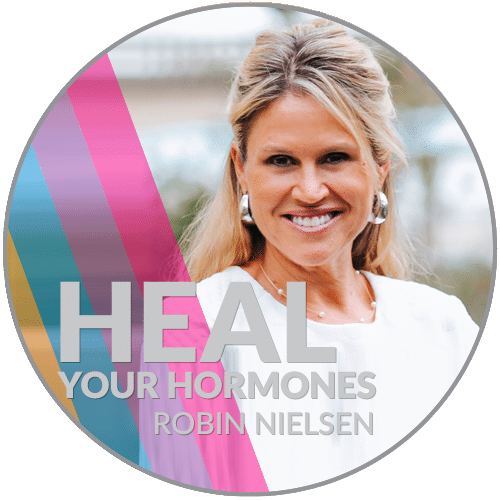
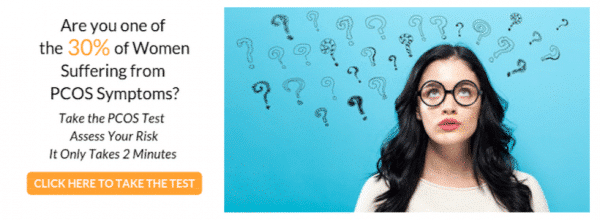


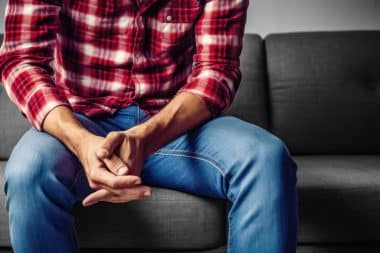
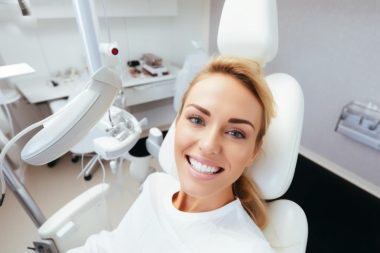
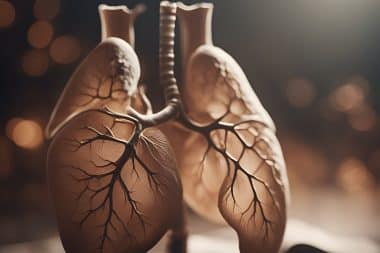
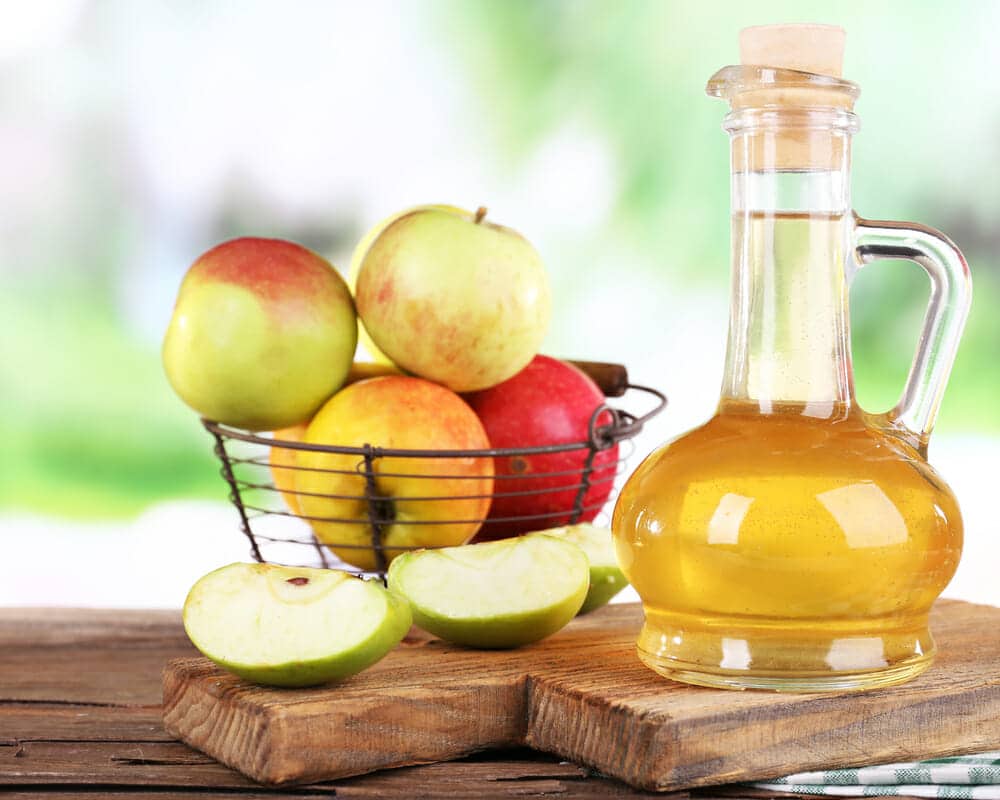
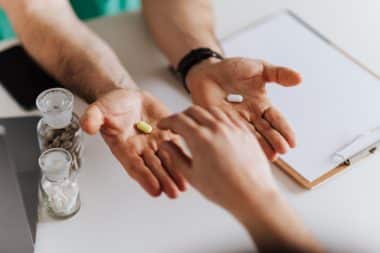
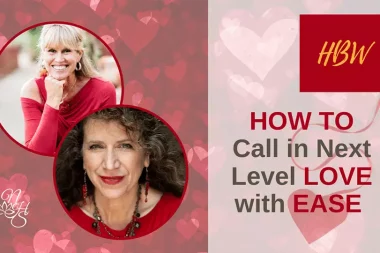
Reply